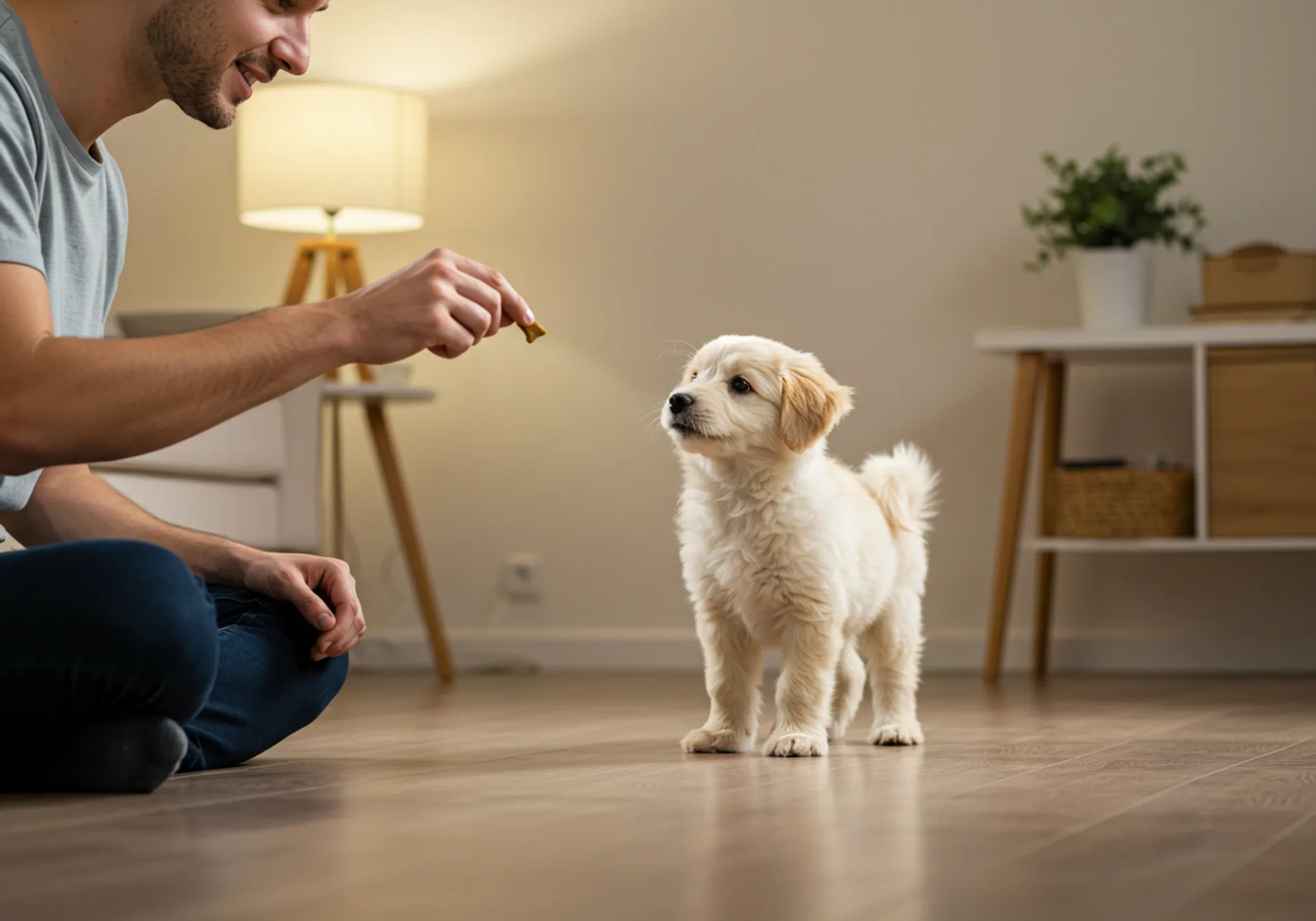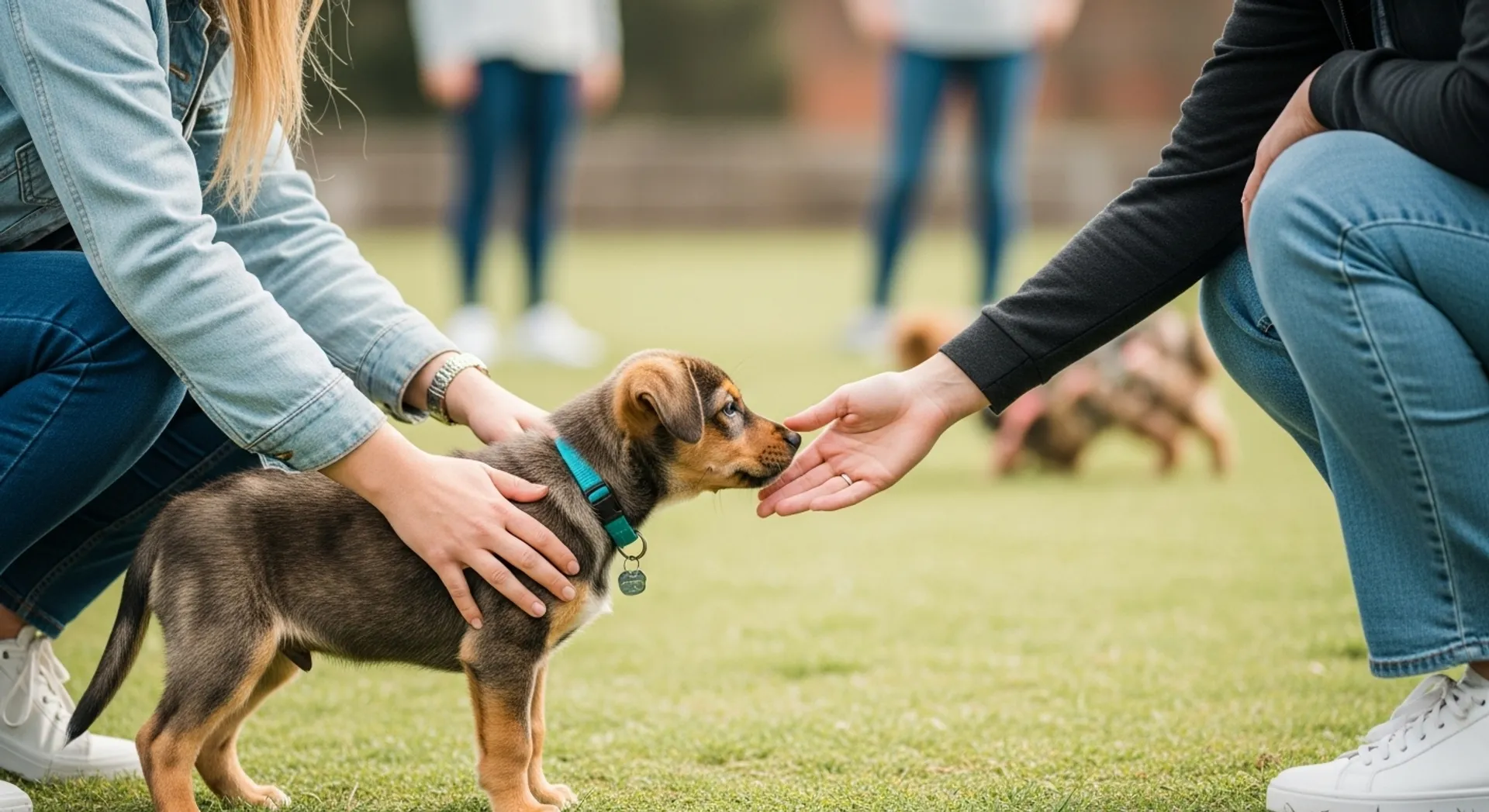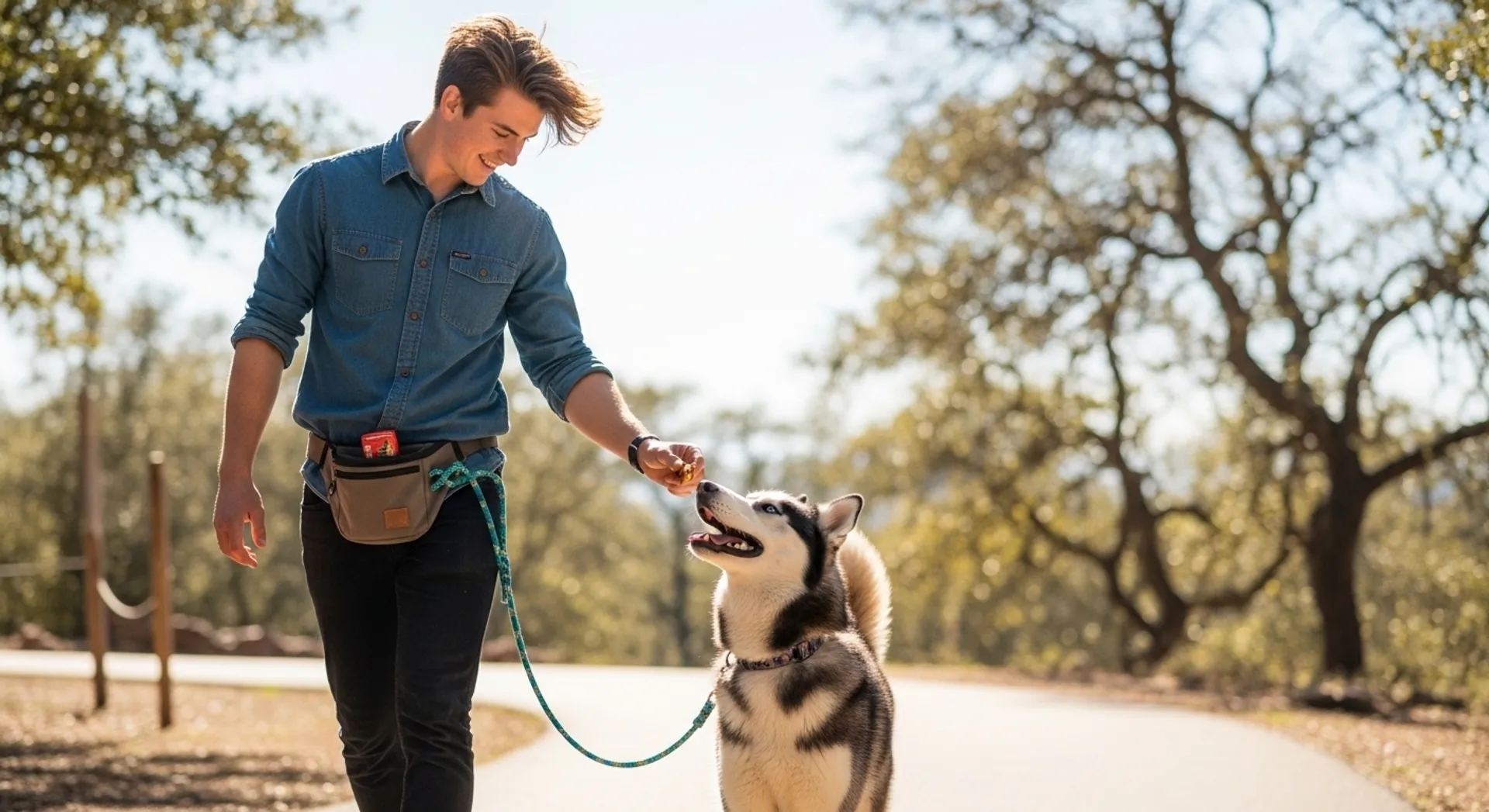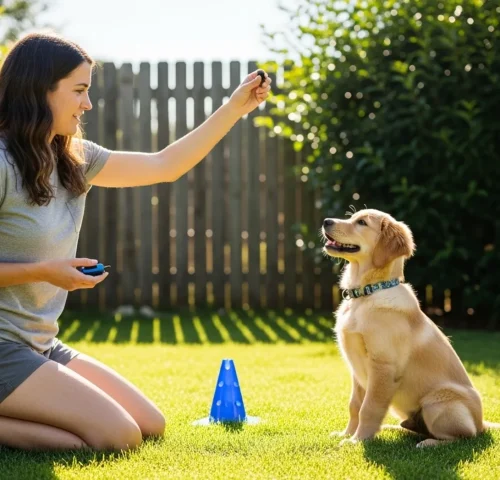Why Training Matters
Training isn’t about controlling your dog — it’s about teaching them how to live safely and happily in your world. A trained dog is easier to manage, less stressed, and more confident. They also face fewer risks, since they respond to commands like “come” or “leave it” in potentially dangerous situations.
Start With the Basics
Before you dive into advanced tricks, focus on core commands that make everyday life easier. These are the building blocks of communication with your dog.
- Sit: The foundation command for good manners.
- Stay: Essential for impulse control.
- Come: Keeps your dog safe during off-leash play or emergencies.
- Down: Helps calm an overly excited pup.
- Leave it: Prevents your dog from eating something harmful.
How to Teach “Sit”
Hold a treat close to your dog’s nose, then slowly move your hand upward. As their head follows, their bottom will naturally lower. The moment they sit, say “sit” and reward them. Repeat several times a day until they get it.

Positive Reinforcement: The Golden Rule
One of the most effective dog training tips is to focus on positive reinforcement. Rewarding good behavior encourages your dog to repeat it. Rewards can include treats, praise, toys, or affection.
Why Punishment Doesn’t Work
Punishment often confuses dogs and damages trust. For example, yelling when your dog chews a shoe doesn’t teach them what to chew — it only makes them fearful. Instead, redirect them to an appropriate toy and reward them for chewing it.
Consistency Is Key
Dogs learn best when rules are clear and consistent. If you allow them on the couch sometimes but not others, they’ll be confused. Decide on household rules and stick to them. Make sure everyone in the family uses the same commands and expectations.
Keep Training Sessions Short
Most dogs have short attention spans, especially puppies. Aim for 5–10 minute sessions a few times a day. End on a positive note, even if it means celebrating small progress. Short, fun sessions are far more effective than long, stressful ones.
Socialization: A Training Essential
Training isn’t just about commands — it’s also about helping your dog feel comfortable in different environments. Socialization introduces your pup to new people, animals, sights, and sounds. A well-socialized dog is less likely to develop fear or aggression.
How to Socialize Your Dog
- Expose them to new places gradually, starting with calm environments.
- Arrange playdates with friendly, vaccinated dogs.
- Reward calm behavior during new experiences.
- Avoid overwhelming your dog with too much too soon.

Addressing Common Behavior Problems
All dogs develop habits that need correcting. The good news? Most can be fixed with the right training approach.
Barking
Dogs bark to communicate. Instead of punishing, identify the cause. Are they bored, anxious, or alerting you? Redirect them with toys, training, or exercise.
Chewing
Puppies chew to relieve teething pain, while adult dogs may chew out of boredom. Provide plenty of safe chew toys and supervise until they learn what’s off-limits.
Jumping
Dogs jump to greet people. To stop this, ignore them when they jump and reward them when all four paws are on the ground.
Pulling on the Leash
If your dog pulls during walks, stop moving until the leash slackens, then continue. Reward them for walking calmly by your side.
Training Tools That Can Help
You don’t need fancy gear to train your dog, but a few tools can make the process easier:
- Treat pouch: Keeps rewards handy.
- Clicker: A sound marker to reinforce good behavior quickly.
- Long leash: Useful for practicing recall in safe, open spaces.
- Kongs or puzzle toys: Help redirect chewing and provide mental stimulation.
Training for Different Ages
Puppies
Focus on basic commands, crate training, and housebreaking. Patience is key, as puppies are eager but easily distracted.
Adult Dogs
It’s never too late to train an adult dog. Reinforce basic commands and work on manners like leash walking and polite greetings.
Seniors
Older dogs may not learn as quickly, but they can still pick up new tricks. Focus on low-impact training that engages their mind without stressing their body.
Adding Mental Exercise
Training isn’t just physical — it’s mental. Keeping your dog’s brain active prevents boredom and destructive behaviors.
- Teach new tricks beyond the basics, like “spin” or “play dead.”
- Use food puzzle toys to make mealtime engaging.
- Play hide-and-seek with treats or toys.
When to Seek Professional Help
If your dog shows aggression, severe anxiety, or behaviors you can’t manage, don’t hesitate to seek help from a certified trainer or behaviorist. Look for professionals who use positive reinforcement methods. The Association of Professional Dog Trainers is a great resource for finding qualified trainers.
Final Thoughts
Training is an ongoing journey, not a one-time task. By focusing on positive reinforcement, consistency, and patience, you can teach your pup the skills they need to thrive. These dog training tips will help you raise a well-mannered, happy companion who feels safe and loved. For more practical advice, visit our Training Tips category here on The Dog Blog.




